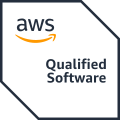Financial Review Features Inspectivity

Inspectivity is proud to be featured in the Australia Financial Review’s recent Software and Technology Report. Read the original article here.
Systems that unlock valuable insights
As pressure grows on the mining, energy and chemical sectors to abide by more stringent inspection regimes, such as electrical equipment hazardous areas (EEHA), industry must leverage the benefits of dedicated inspection management systems, rather than continuing to cobble together inspection solutions using tools that aren’t designed for the job.
Areas where an explosive atmosphere can be present – such as flammable gases and vapours, or combustible dusts, fibres and filings – often require special precautions to be taken when it comes to using electrical equipment that is a potential ignition source. There are several relevant Australian standards and such equipment must undergo regular inspection to ensure it continues to be safe to operate in hazardous areas.
The requirement for EEHA inspections is becoming more common as Australia’s liquid natural gas sector expands and the nation’s hydrogen industry develops, although the risk extends much further – for example, the range of substances that can form combustible dusts extends from aluminium and plastic to flour and sugar.
While considering such safety threats was once treated as an afterthought, this is changing as new workplace manslaughter laws introduce the potential to find organisations and their senior management responsible for workplace deaths. In Victoria, negligent employers now face fines of up to $16.5 million and individuals face up to 25 years in jail.
The need for regular EEHA inspections is just one example of the growing inspection burden on Australian businesses. Inspection activities are ubiquitous throughout a project life cycle. In engineering and construction, this includes factory acceptance tests, inspection test plans and commissioning checklists such as mechanical and electrical completion. In operations, it includes maintenance, safety, environmental and compliance routines.
Enterprises have typically done away with pen and paper inspections, which introduce the risk of errors due to double-handling and the lack of a validation framework when entering data into paper forms. Working with pen and paper also fails to capture audio, video and images, which can add valuable context to inspection reports.
Digital inspection tools and processes significantly reduce the number of staff hours spent on the inspection life cycle, but simply digitising the inspection process fails to reap the full benefits, says Paul Eddison – co-founder and director of cloud inspection management software provider Inspectivity.
While many form-builder apps support digital inspection, Eddison says these types of products are not asset-centric. They do not maintain an inspection history, against the backbone of an asset hierarchy, and therefore are typically not suitable for engineering teams.
‘‘Other businesses attempt to manage inspections within their ERP system, rather than adopting a dedicated inspection management system, even though ERP is designed as a commercial resource planning tool rather than an engineering technical data repository,’’ he says.
‘‘Alternatively, they might invest in multiple, use case-specific solutions – which are impractical for end users and fragment data throughout the organisation – rather than looking to a single holistic solution, which delivers benefits across project phases, business units, disciplines and teams.’’
As a result, valuable inspection data is often locked away in inaccessible formats, perhaps only available to a small inspection and maintenance team rather than the wider business.
Without a true inspection management system, businesses have very limited visibility into the condition of their assets, Eddison says. To unlock the true value of data gathered from all inspection activities, during all phases, it must be collected and managed in a single repository and accessible to all those who require it for the full project/operations life cycle.
Inspectivity Co-Founder, Paul Eddison
“The goal is to democratise inspection data, which is often hidden away in flat files, and make it readily available to all stakeholders that need to make critical decisions based on the outcomes of inspection and maintenance work,”
Cloud-based inspection solutions also drive collaboration by connecting field inspection teams and the real-time data they are collecting with their colleagues, customers and other stakeholders regardless of their location.
Improved collaboration allows teams to reduce their staff footprints, in particular for offshore and remote projects, which is safer, more cost-effective and better in line with sustainability goals such as reduced air travel.
The benefits of adopting an inspection management system extend beyond simply optimising existing operations. It also offers the opportunity to unlock the true value of that high-quality data, such as supporting future automation, machine learning and artificial intelligence opportunities.
‘‘If you’ve got thousands of images of corrosion, for example, you can use that valuable data set to train machine learning, in order to recognise the early signs of an issue and then in the future automate the assessment of the imagery collected from, say, a fleet of drones,’’ Eddison says.
‘‘That is just one example of how you can extract further valuable insight from your inspection data, but only if that data is at your fingertips in an inspection management system, rather than locked away in systems, which aren’t the right tool for the job.’’
About Inspectivity
Inspectivity is an Australian SaaS company assisting operators, EPCs and service providers to collect rich asset condition data sets through digital inspection.
The Inspectivity platform is a no-code software toolkit for the configuration of any asset-centric enterprise inspection use case. Combining modern web and mobile apps to connect global teams and supercharge inspection outcomes. Inspectivity’s approach to digital asset inspection provides a standardised, repeatable, and scalable inspection methodology to improve reliability, sustainability and quality control for critical assets. Delivering benefits across the full project lifecycle: design, construction, commissioning and operations. One solution for any project, phase of work, or inspection discipline.
If you would like to learn more about Inspectivity’s digital toolkit for the configuration and management of any asset-centric enterprise inspection use cases please contact us.
+61 (0) 8 6160 6060
sales@inspectivity.com





